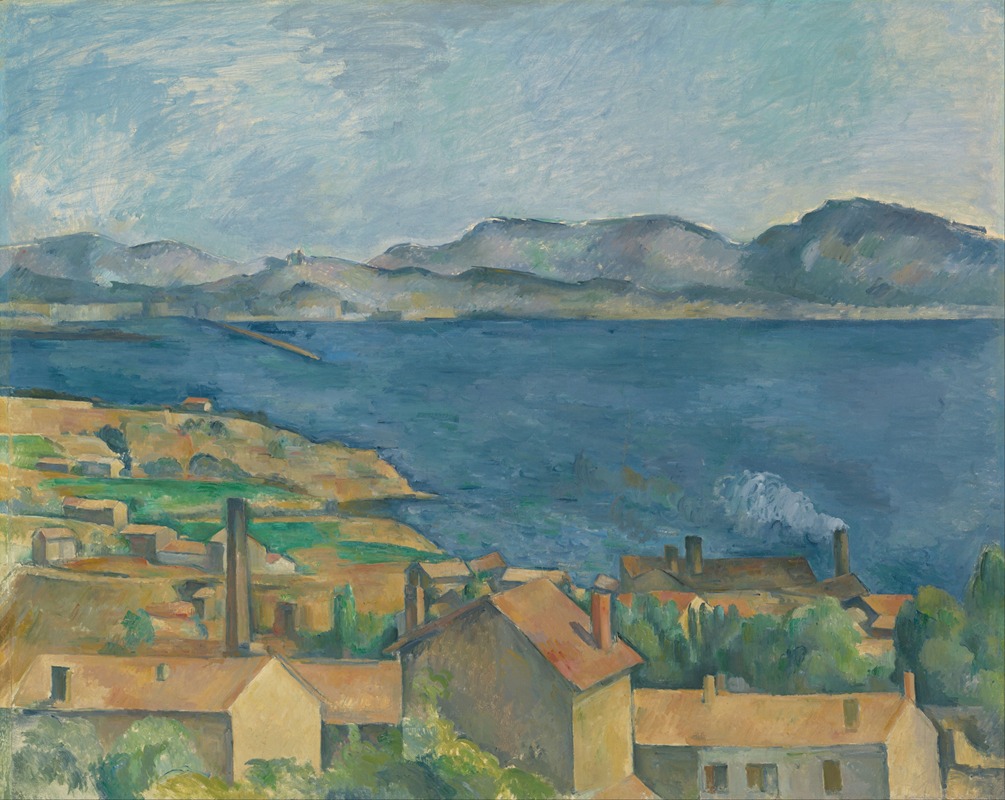
The Bay of Marseilles, Seen from L’Estaque
A hand-painted replica of Paul Cézanne’s masterpiece The Bay of Marseilles, Seen from L’Estaque, meticulously crafted by professional artists to capture the true essence of the original. Each piece is created with museum-quality canvas and rare mineral pigments, carefully painted by experienced artists with delicate brushstrokes and rich, layered colors to perfectly recreate the texture of the original artwork. Unlike machine-printed reproductions, this hand-painted version brings the painting to life, infused with the artist’s emotions and skill in every stroke. Whether for personal collection or home decoration, it instantly elevates the artistic atmosphere of any space.
The Bay of Marseilles, Seen from L’Estaque is a landscape painting by the French Post-Impressionist artist Paul Cézanne. Created around 1885, this work is one of several paintings Cézanne produced during his time in L’Estaque, a small village near Marseille in the south of France. The painting is celebrated for its innovative approach to composition, color, and form, which exemplifies Cézanne’s pivotal role in the transition from 19th-century Impressionism to 20th-century modernism.
Cézanne frequently visited L’Estaque between the late 1870s and the 1880s, drawn to the region’s Mediterranean light and rugged landscape. The Bay of Marseilles, Seen from L’Estaque depicts a panoramic view of the bay, with the city of Marseille visible in the distance. The scene is framed by the natural elements of the area, including the sea, sky, and hills, which Cézanne rendered with his characteristic use of geometric forms and subtle tonal gradations.
The painting is notable for its structured composition, which reflects Cézanne’s interest in reducing natural forms to their underlying geometric shapes. The houses, trees, and hills are simplified into blocks of color and planes, creating a sense of order and stability. This approach was a departure from the fleeting, atmospheric effects favored by the Impressionists, and it laid the groundwork for the development of Cubism in the early 20th century.
Cézanne’s use of color in this work is also significant. He employed a palette dominated by blues, greens, and earthy tones, which convey the luminosity and warmth of the Mediterranean environment. The interplay of light and shadow is carefully balanced, giving the painting a harmonious and timeless quality.
The Bay of Marseilles, Seen from L’Estaque is housed in the Art Institute of Chicago, where it is part of the museum’s renowned collection of Post-Impressionist art. The painting is widely regarded as a masterpiece of Cézanne’s mature period and a key example of his innovative approach to landscape painting. It continues to be studied and admired for its contribution to the evolution of modern art.
This work exemplifies Cézanne’s belief that art should reflect the underlying structure of nature, rather than merely capturing its surface appearance. His exploration of form and perspective in this painting had a profound influence on later artists, including Pablo Picasso and Georges Braque, who credited Cézanne as a major inspiration for their development of Cubism.


















